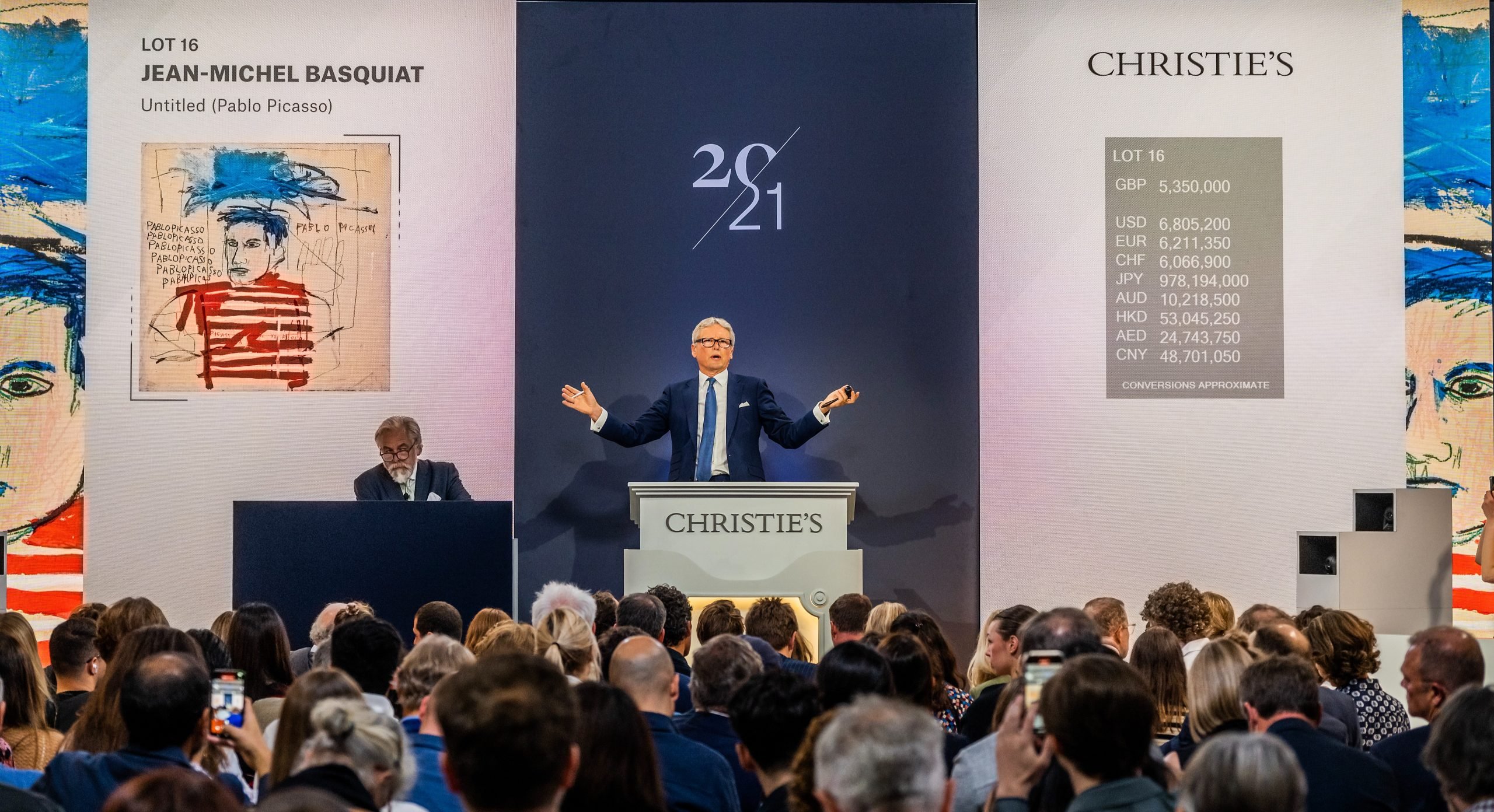
If “everything must go” was the strategy Christie’s employed for its 20th/21st Century London evening sale on Wednesday, it worked pretty well. Of the 66 lots offered at the two-and-a-half-hour event at the house’s King Street premise, 61 lots, or 92 percent, found buyers. Five artist records were achieved and several works sold for prices that were well above their presale estimates.
But upon closer inspection, there were also disappointments. There wasn’t a star lot with an eight-figure estimate, like the house’s arch-rival Sotheby’s was shopping on Tuesday. Market darling Gerhard Richter’s rare landscape work Grünes Feld (Green Field) (1969), estimated at £4 million to £6 million ($5 million to $7.4 million), failed to find a buyer. Nearly a quarter of the works went under hammer below the low estimate.
Paul Signac, Calanque des Canoubiers (Pointe de Bamer), Saint-Tropez (1896). Courtesy of Christie’s.
The sale achieved a hammer total of £51.7 million ($65 million), which fell below the low end of expectations of £55 million ($69.8 million) when adjusted to reflect two withdrawn lots. Those lots were a 1957 work on paper by Frank Auerbach and a 1886 canvas work by Pierre-Auguste Renoir. Including fees, the sale totaled £64 million ($81 million), a significant dip from last June’s £181 million ($222 million) and June 2021’s £119.3 million ($166 million). A total of 13 lots were under third-party guarantee.
“It shows that the market participants are much more cautious and careful,” London-based art advisor Olga Ovenden told Artnet News. “There are still some stars—Caroline Walker and Louis Fratino—but other young artists who were ‘hot’ just recently did not manage to sell.”
“But market correction—what we are witnessing now—is not a bad thing, after all. Certainly it will do good to the careers of younger artists, who will be able to develop in a calmer environment, and it will clear the field for more serious collectors and not just speculators.”
Caroline Walker, Recreation Pavilion (2013). Courtesy of Christie’s.
Wednesday’s sale was held in the pre-pandemic format, whereas the past two years’ June sales were lopped in with the Paris auctions, and known as the “London to Paris” sales. But the return to normalcy did not herald perfect results.
Leading the sale was Paul Signac’s painting Calanque des Canoubiers (Pointe de Bamber), Saint-Tropez (1896), which went under hammer for £6.7 million ($8.5 million), which was within expectations (£8 million/$10 million including fees). It sold to a phone bidder represented by Olivier Camu, Christie’s deputy chairman of Impressionist and modern art in London.
This was followed by Jean-Michel Basquiat’s 1984 Untitled (Pablo Picasso), featured as part of the sale’s portrait theme, which coincides with the re-opening of the National Portrait Gallery in London this month. An Italian collector bought the work for $2 million at a 2007 Christie’s London sale. It was exhibited at London’s Barbican in 2017.
The work generated some enthusiasm from the audience, including from a handful of youthful Asian faces in the room, which was no surprise considering how popular Basquiat has been among Asian buyers in recent years. Eventually an intense bidding war between two in-room parties developed. One was New York dealer Alex Acquavella, who eventually lost the piece to a bidder in the front at a hammer price of £5.35 million ($6.8 million).
Cecily Brown, Kiss Me Stupid (1999). Courtesy of Christie’s.
To be sure, over a dozen works sold well above the presale estimates. Among the most exciting was a 2017 painting Weltinnenraum (World Within) by 1974-born Victor Man depicting the artist’s pregnant partner. The piece was estimated at £100,000 to £150,000 ($130,000 to $190,000), but after a long war among several bidders, it settled at a hammer price of £1.4 million ($1.8 million), 14 times the low estimate. The work achieved a sale price including fees of £1.7 million ($2.2 million), a record for the artist. Other artist records set included Diane Dal-Pra, Chase Hall, Ahmed Mater, and the auction debut of Sahara Longe.
Other success stories included the 1993-born Fratino’s painting Listening to a conch (2017), which went under hammer at £160,000 ($202,408) and sold for £201,000 ($254,276 including fees). Scottish artist Caroline Walker’s Recreation Pavilion (2013) went under hammer at £350,000 ($442,769), more than double the low estimate. The work sold for £441,000 ($557,889) including fees.
Hammer prices of works by blue chip names such as Lucio Fontana, Yayoi Kusama, and Cy Twombly did not meet their low estimates, however. For instance, Cecily Brown’s Kiss Me Stupid (1999) went under hammer at £2.9 million ($3.7 million), below the low estimate. But the sale price including fees at £3.5 million ($4.5 million) at least allowed the seller to make a profit, as it was more than five times the sale price when the work was acquired from a 2008 Sotheby’s New York sale.
The seller of South African artist Marlene Dumas’s work on paper Chained to the Bed for 15 Years (1986), on the other hand, was not so fortunate. It went under hammer at £90,000 against the low estimate of £200,000 ($250,000). It sold for £113,400 ($143,393) including fees, just about 35 percent of the sale price (£325,000/ $424,171) achieved at the Phillips London sale in 2020.
More Trending Stories:
The Venice Biennale Has Announced the Highly Anticipated Curatorial Theme of Its 2024 Art Exhibition